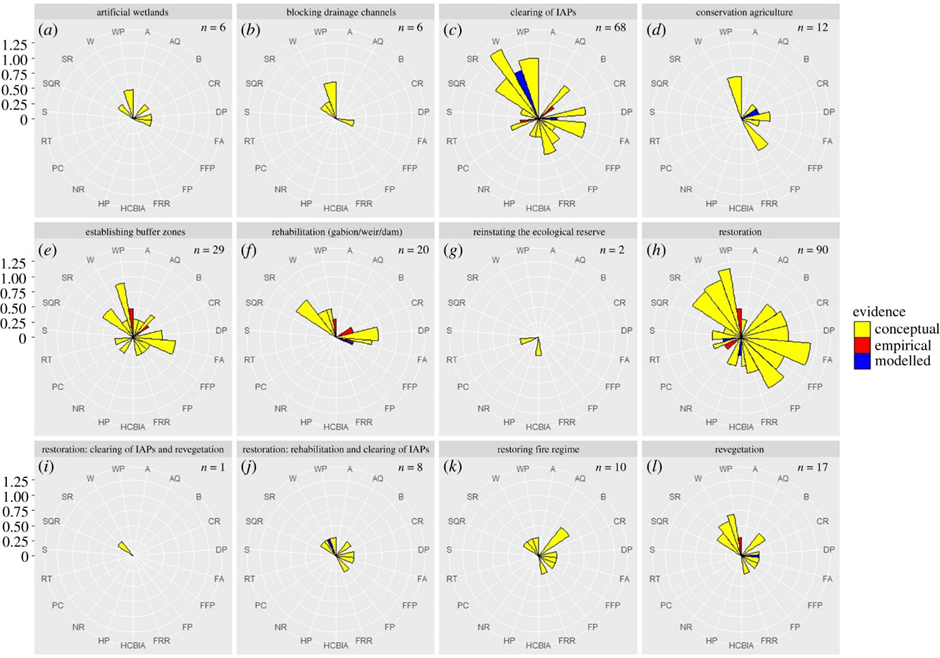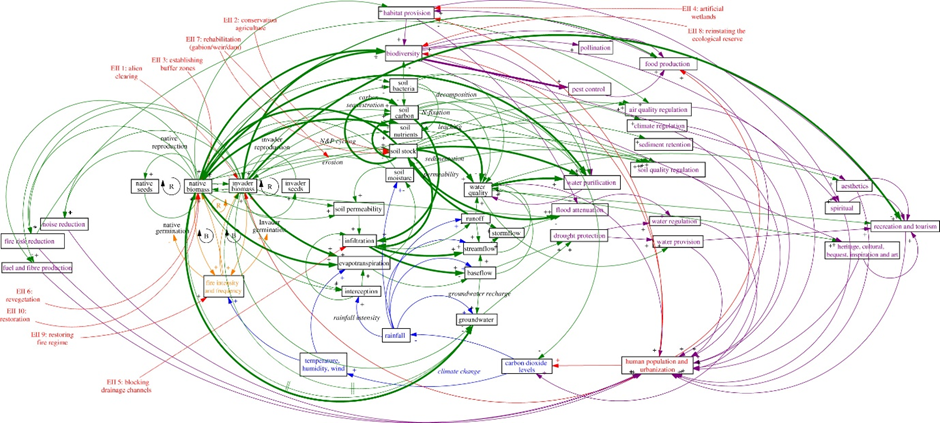1 June 2021 | By Alanna Rebelo
In a study of three South African river catchments (the Berg, Breede and uMngeni) that have received significant investment into ecological infrastructure (e.g. clearing invasive alien trees), the evidence base for the benefits of these investments was found to be empirically weak.
This work was undertaken as part of the Socio-Economic Benefits for Investing in Ecological Infrastructure (SEBEI) Project by researchers Alanna Rebelo, Petra Holden and Mark New, as well as Karen Esler from the C∙I∙B.
They asked the question: is there evidence that ecological infrastructure interventions are delivering the proposed benefits?
To answer this question, they drew together three approaches:
- The development of an ‘ecological infrastructure intervention – ecosystem services’ (EII-ES) framework which they used to hypothesize the effects of ecological infrastructure interventions on ecosystem processes and services.
- A review of peer-reviewed and grey literature in the three catchments.
- Integration of the hypothesized EII-ES framework with the evidence from the literature review into a conceptual diagram using causal loop diagramming principles.
The implication of this weak empirical evidence base of benefits of investing in ecological infrastructure is (1) that there is a need for better baseline data collection, and monitoring during and after ecological infrastructure interventions (like alien clearing) to establish evidence for the benefits, and (2) that governments make funding available to support focused, applied and local empirical research to build an evidence base for the benefits. This could help to attract or leverage private sector funding.
“Our systems dynamic framework also is a good starting point for identifying the gaps where evidence is lacking in terms of quantifying the linkages between various interventions and their impacts (e.g. how ecosystem properties and processes relate to ecosystem services), specifically for these three South African catchments,” said Alanna Rebelo, lead author of the paper published in The Royal Society of Open Science.
Read the paper in The Royal Society of Open Science
Rebelo, A.J., Holden, P.B., Esler, K.J, & New, M.G. 2021. Benefits of water-related ecological infrastructure investments to support sustainable land-use: a review of evidence from critically water-stressed catchments in South Africa. The Royal Society of Open Science. https://doi.org/10.1098/rsos.201402
For more information, contact Alanna Rebelo at ARebelo@sun.ac.za
Definitions
- Ecological infrastructure: ‘the underlying framework of natural elements, ecosystems, and functions and processes that are spatially and temporally connected to supply ecosystem services’ (Dominati 2013)
- Ecological infrastructure interventions: artificial or natural actions that aim to enhance chosen ecosystem services in intact to transformed landscapes, informed by an understanding of ecology. Examples of natural interventions include alien plant clearing and revegetation, and examples of artificial interventions include artificial wetlands, permeable pavements and erosion control structures (gabions and weirs).




